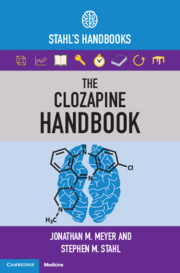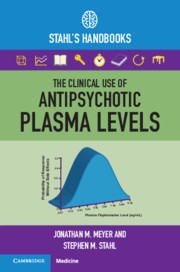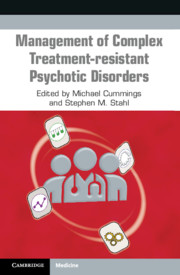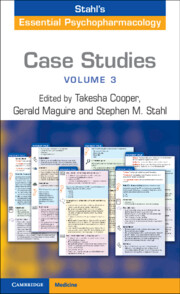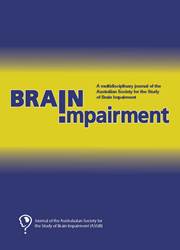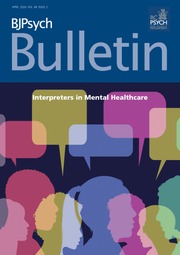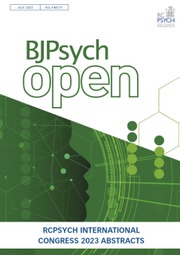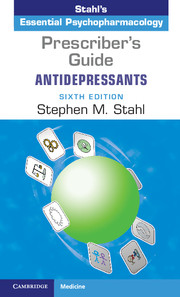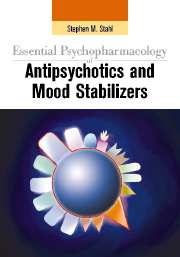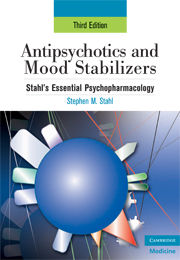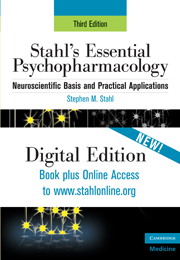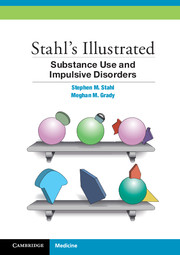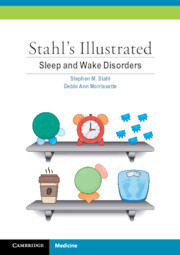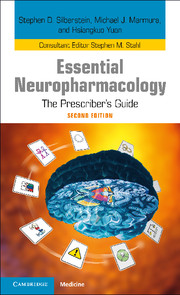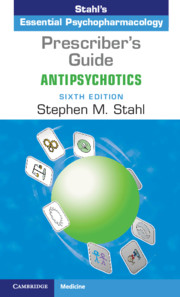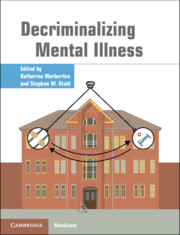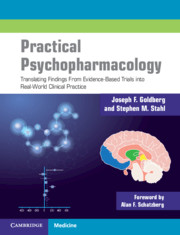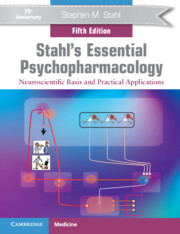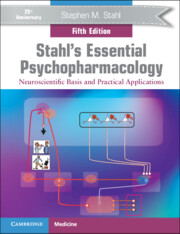The Clozapine Handbook
Stahl's Handbooks
Part of Stahl's Essential Psychopharmacology Handbooks
- Authors:
- Jonathan M. Meyer, University of California, San Diego
- Stephen M. Stahl, University of California, San Diego
- Date Published: September 2019
- availability: Available
- format: Paperback
- isbn: 9781108447461
Paperback
Other available formats:
eBook
Looking for an inspection copy?
This title is not currently available for inspection. However, if you are interested in the title for your course we can consider offering an inspection copy. To register your interest please contact [email protected] providing details of the course you are teaching.
-
Real-world and clinical trial data support that clozapine is the only effective antipsychotic for treatment resistant schizophrenia and other severe mental illnesses. Clozapine also reduces rates of suicidality, psychiatric hospitalization and all-cause mortality. However, clozapine is underutilized for two reasons: misunderstandings of its efficacy benefits and misapprehension of, limited knowledge or misinformation about the management of treatment related risks and adverse effects. In response to worldwide efforts to promote clozapine use, this user-friendly Handbook provides clinicians with evidence-based approaches for patient management, as well as logical approaches to the management of clinical situations and adverse effects. It outlines clearly the rationale for specific management decisions and prioritises the options based on this logic. This Handbook is designed for use by clinicians worldwide and is essential reading for all mental health care professionals.
Read more- The increased interest in promoting greater clozapine use internationally means this book fills a gap in the market for clinicians who seek evidence-based advice on best practices
- Use of clozapine has shown real world benefits such as a reduction in suicidality, psychiatric hospitalization and mortality rates; many clinicians are unfamiliar with recent improvements in the understanding of clozapine-related dosing and adverse effect management
- Provides a logical, evidence-based framework for important clinical issues, leading the clinician through the reasoning process for adverse effect management and other common clinical situations
Customer reviews
17th Oct 2024 by UName-844551
The Clozapine Handbook is a super useful reference that can give any psychiatrist the expertise they need to to prescribe clozapine confidently. The book provides a high level of clinically relevant information that is not provided in most psychiatric residencies. This handbook is now the most up-to-date and clinically relevant clozapine reference in the world. There is nothing else like it. The book is well-indexed so it is very easy to locate specific information on just about any topic related to clozapine. There are helpful tables, graphs and summary boxes. The book contains everything from the history of clozapine, how to initiate and titrate clozapine, what you need to know about clozapine metabolism and drug interactions, how to monitor clozapine plasma levels, how to monitor for potential adverse side effects and how to effectively manage bothersome side effects to keep your patients on clozapine like a world class psychopharmacologist!
Review was not posted due to profanity
×Product details
- Date Published: September 2019
- format: Paperback
- isbn: 9781108447461
- length: 326 pages
- dimensions: 186 x 123 x 14 mm
- weight: 0.36kg
- contains: 24 b/w illus.
- availability: Available
Table of Contents
Preface
1. Initiating Clozapine
2. Understanding hematologic monitoring and benign ethnic neutropenia
3. Binding profile, metabolism, kinetics, drug interactions and use of plasma levels
4. Managing constipation
5. Managing sialorrhea
6. Managing sedation, orthostasis and tachycardia
7. Managing metabolic adverse effects
8. Managing seizure risk and stuttering
9. Fever, myocarditis, interstitial nephritis, DRESS, serositis and cardiomyopathy
10. Eosinophilia, leukocytosis, thrombocytopenia, thrombocytosis, anemia, hepatic function abnormalities
11. Managing enuresis and incontinence, priapism, venous thromboembolism, neuroleptic malignant syndrome, tardive dyskinesia and obsessive compulsive disorder
12. The efficacy story: treatment resistant schizophrenia, psychogenic polydipsia, treatment intolerant schizophrenia, suicidality, violence, mania and Parkinson's disease psychosis
13. Addressing clozapine positive symptom nonresponse in schizophrenia spectrum patients
14. Discontinuing clozapine and management of cholinergic rebound
15. Special topics: child and adolescent patients, elderly patients, patients with intellectual disability, pregnancy and risk for major congenital malformation, lactation, overdose, postmortem redistribution
Index.
Sorry, this resource is locked
Please register or sign in to request access. If you are having problems accessing these resources please email [email protected]
Register Sign in» Proceed
You are now leaving the Cambridge University Press website. Your eBook purchase and download will be completed by our partner www.ebooks.com. Please see the permission section of the www.ebooks.com catalogue page for details of the print & copy limits on our eBooks.
Continue ×Are you sure you want to delete your account?
This cannot be undone.
Thank you for your feedback which will help us improve our service.
If you requested a response, we will make sure to get back to you shortly.
×
